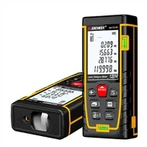Classification and application of parity check code for DC power supply
The parity check code of the DC power supply is generally divided into two parts: one is the information code, and the other is the parity check code.
The information code is the information that transmits the DC stabilized power supply, which can be a binary code group with unlimited digits; the bit meter for inspection has one bit, and its value depends on whether the digital system adopts parity check or transfer check.
If parity check is used. The value of the parity check bit should be such that the total number of "1" in the parity check code is odd, and if even check is used, the value of the parity check bit should make the total number of "l" in the parity check code be Even save.
Usually, after the parity check code is received, it is checked, that is, to see whether the parity of the number of "1" in the code group is correct, if not, it means that the information transmission is wrong.
For example, if the transmission is an odd check code, then if the received code group is 0000I, IIIIII, etc., it is considered that the transmission is correct, if the received code group is oaiio, 10a01, etc., because the total number of "1" in these code groups is an even number. It is considered that an error occurred in the transmission of the message.
It is understood that the parity check code of the DC regulated power supply only detects one bit error.
Under normal circumstances, there may also be two bits detected, but under normal circumstances, it may be because the probability of two P double numbers is much smaller than that of a single shop.
Therefore, parity checking codes are still widely used in digital devices and computers, and all kinds of codes can constitute parity checking codes.





